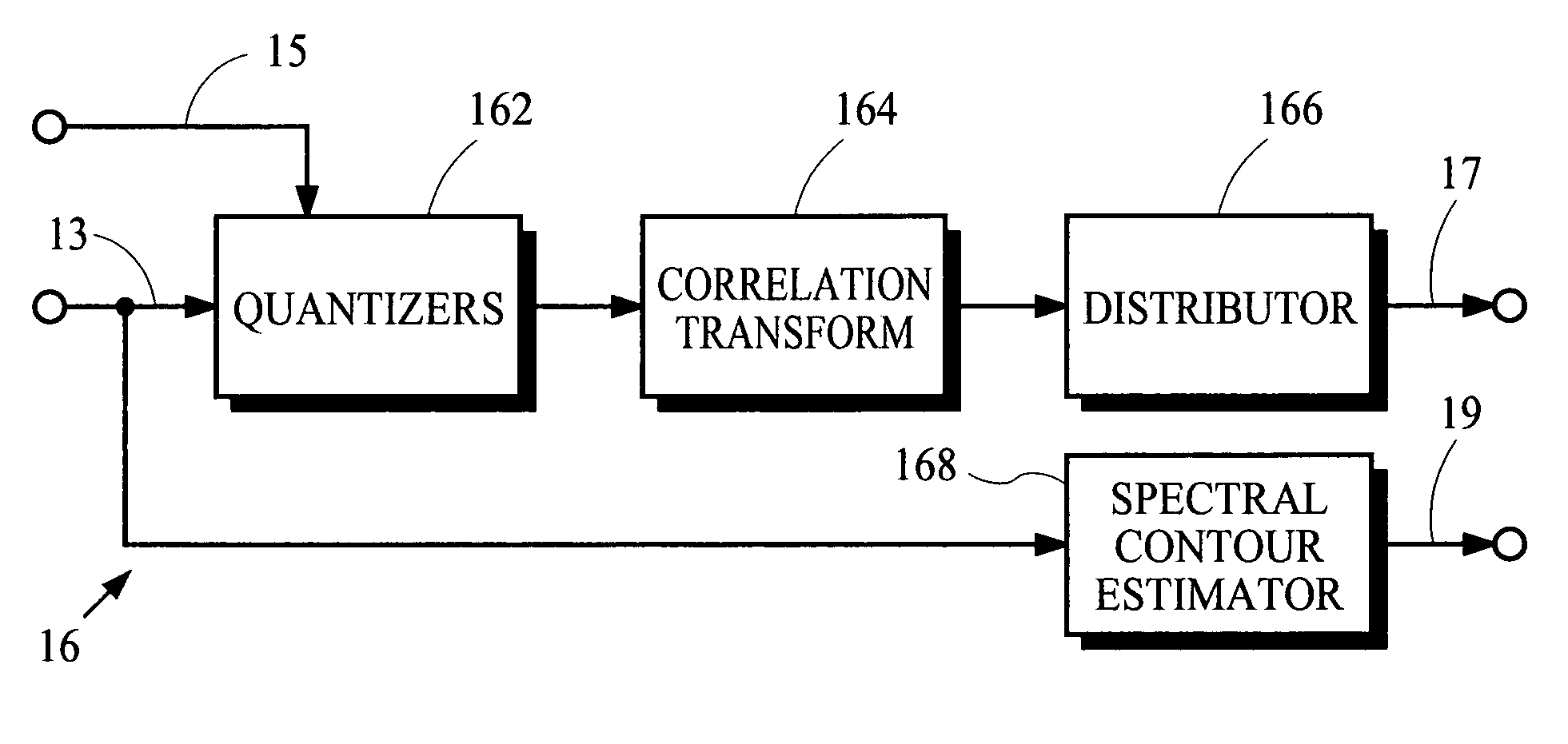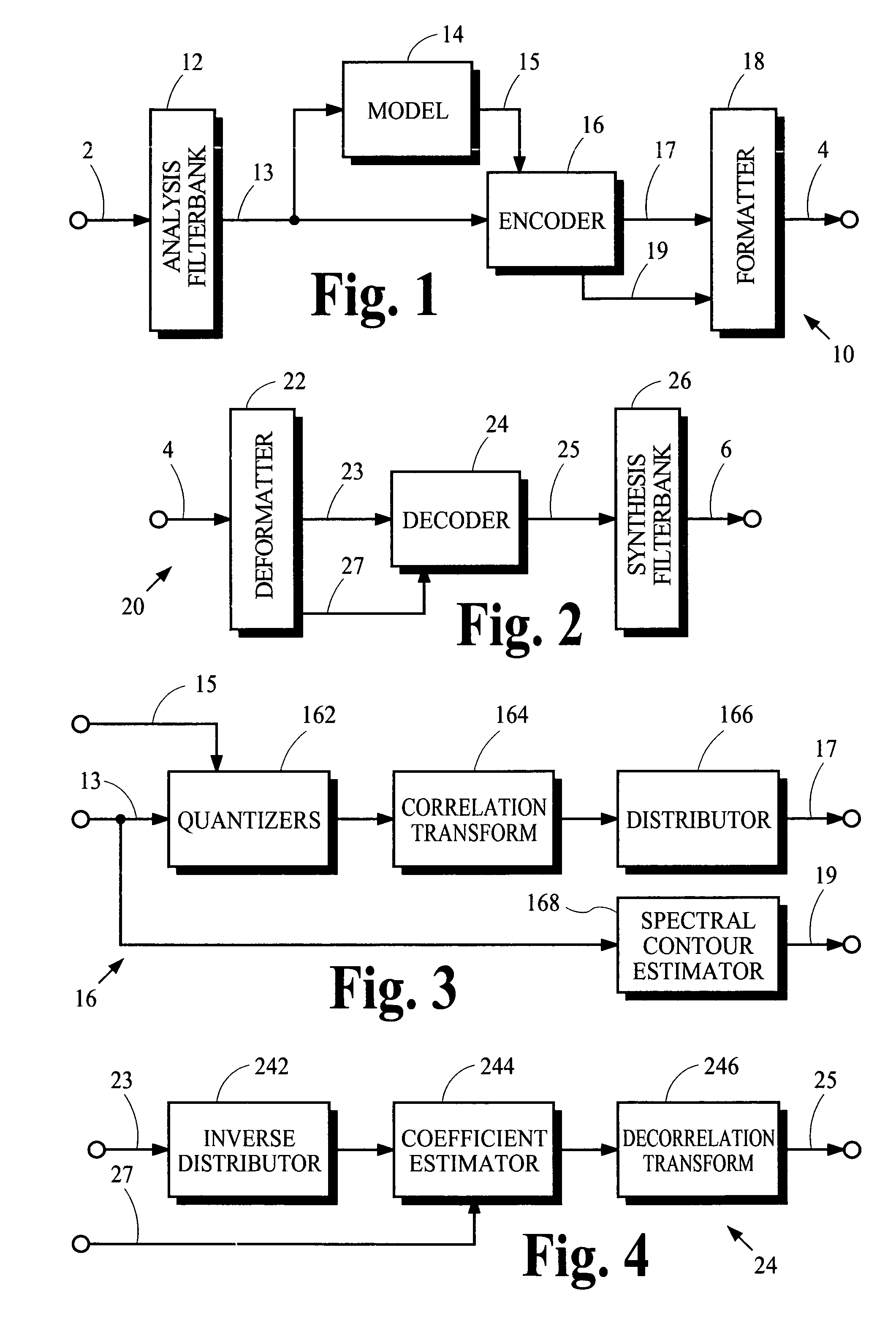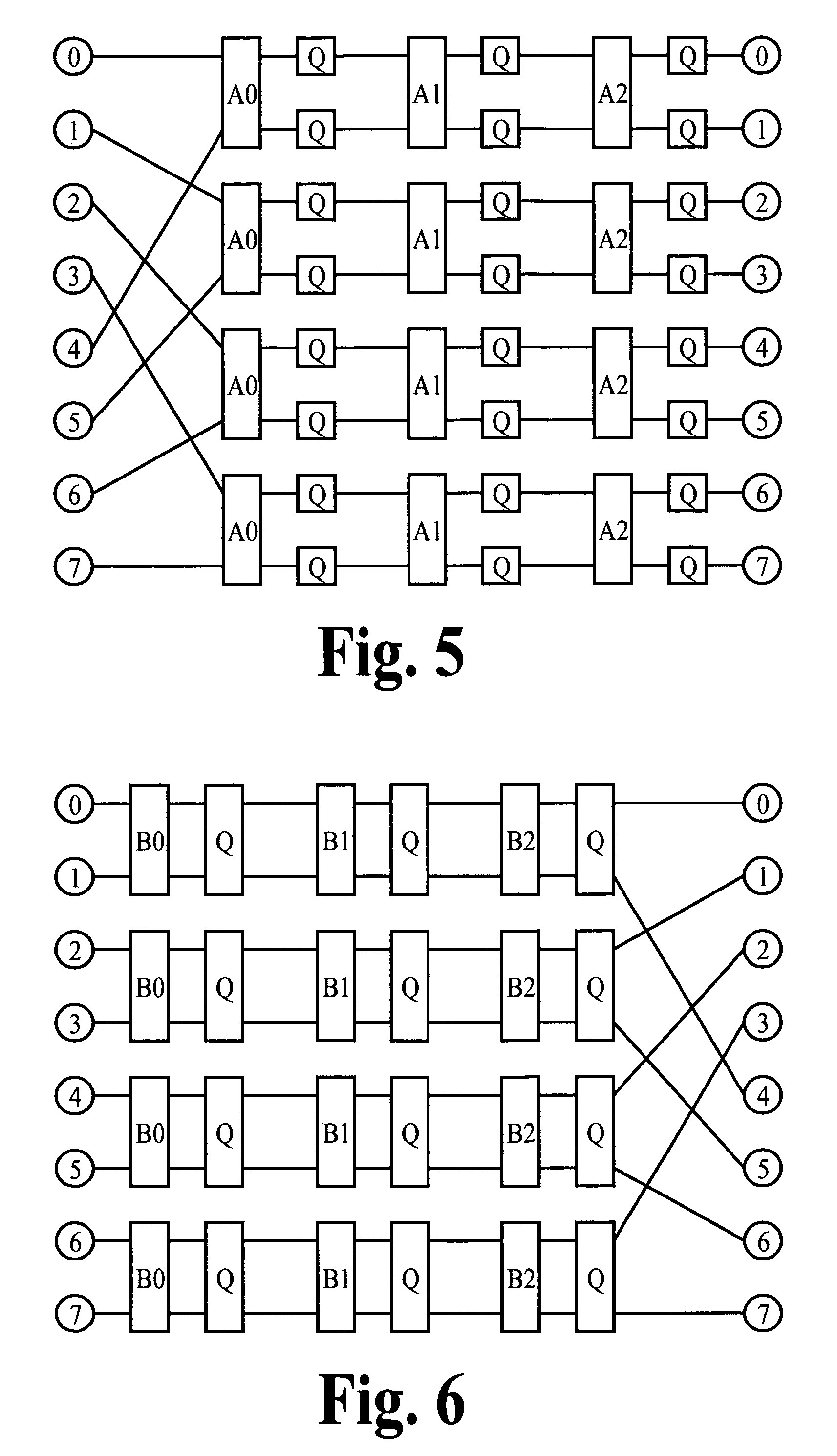Correlating and decorrelating transforms for multiple description coding systems
a coding system and description technology, applied in the field of multiple description coding systems and techniques, can solve the problems of reducing the perceived quality of the facsimile that is reconstructed by a decoder, requiring a considerable amount of computational resources to perform calculations, and known ways of implementing correlating transforms are computationally intensiv
- Summary
- Abstract
- Description
- Claims
- Application Information
AI Technical Summary
Benefits of technology
Problems solved by technology
Method used
Image
Examples
Embodiment Construction
A. Introduction
1. System Overview
[0024]FIG. 1 is a schematic block diagram of one example of a transmitter 10 in a perceptual coding system. In this particular example, the transmitter 10 applies the analysis filterbank 12 to the source signal 2 to generate frequency subband signals 13, and applies the perceptual model 14 to the subband signals 13 to assess the perceptual masking properties of the source signal 2. The encoder 16 quantizes elements of the subband signals 13 with quantizing resolutions chosen according to control information 15 received from the perceptual model 14 and encodes the quantized subband signal elements into multiple descriptions 17, which are assembled by the formatter 18 into an encoded signal 4. In preferred implementations, the encoder 16 also provides an estimated spectral contour 19 of the source signal 2 for inclusion in the encoded signal 4. Various aspects of the present invention may be incorporated into the encoder 16 to facilitate the generation...
PUM
 Login to View More
Login to View More Abstract
Description
Claims
Application Information
 Login to View More
Login to View More - R&D
- Intellectual Property
- Life Sciences
- Materials
- Tech Scout
- Unparalleled Data Quality
- Higher Quality Content
- 60% Fewer Hallucinations
Browse by: Latest US Patents, China's latest patents, Technical Efficacy Thesaurus, Application Domain, Technology Topic, Popular Technical Reports.
© 2025 PatSnap. All rights reserved.Legal|Privacy policy|Modern Slavery Act Transparency Statement|Sitemap|About US| Contact US: help@patsnap.com



